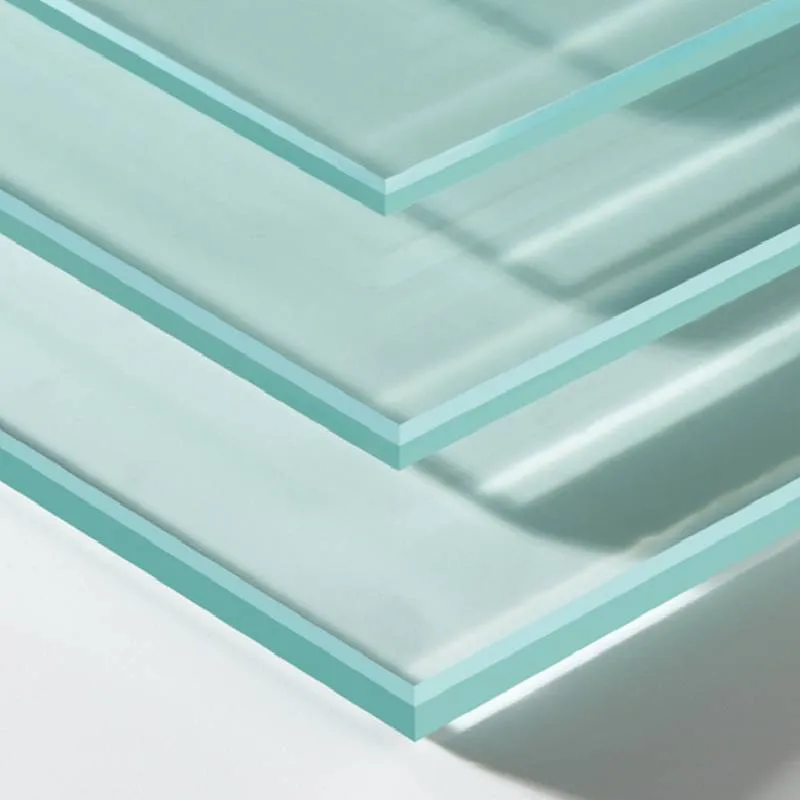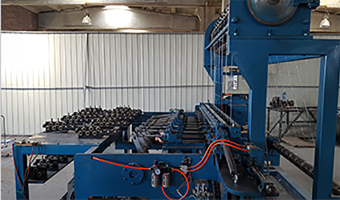Float glass process is a revolutionary technique in the manufacture of high-quality, flat glass with a consistent thickness, offering exceptional clarity. An innovation traced back to the 1950s, this process has become the industry standard, essential for producing everything from windows to high-tech screens.

In practice, the float glass process begins with carefully selected raw materials sand, soda ash, limestone, and other minor additions. These components are melted at high temperatures in a furnace, forming a molten glass mixture. This mixture is then fed onto a bath of molten tin, which is perfectly smooth. Due to its higher density, the glass floats on the tin, forming a perfect,
flat surface.
One significant advantage of this method is the uniformity it ensures. The glass surface remains perfectly flat due to the natural leveling effect of the molten tin. The glass is then gradually cooled in an annealing lehr to prevent any internal stresses, thus ensuring durability. This precise temperature control confirms the reliability of the glass when subjected to external forces or environmental changes.

From an expertise perspective, the float glass process is remarkable not only for its efficiency but also for its versatility. It allows the production of glass at various thicknesses and can easily be adapted for additional treatments, such as coloring or coating, to enhance its functional properties, such as UV protection or shatter resistance. This flexibility in customization supports a wide range of industries, bolstering consumer products with enhanced features aligned with contemporary needs.
float glass process
Float glass demonstrates clear authoritativeness due to its widespread adoption in architectural and automotive applications. Notably, its role in the construction industry is unparalleled, providing the vital transparency needed in modern eco-friendly building designs, which focus on maximizing natural light to reduce energy consumption. The automotive industry also values float glass for its strength and optical clarity, which are critical for safety and design aesthetics.
Trustworthiness in the float glass process is ensured through rigorous quality control measures at each production stage. State-of-the-art diagnostic tools and strict adherence to international standards solidify the reliability of the final product. This commitment to quality is recognized by myriad certifications conferred upon production facilities globally. The trust placed in float glass by architects, engineers, and consumers attests to its significant role in today's infrastructure.
Considering the float glass process's experience, expertise, authoritativeness, and trustworthiness, its essential impact on product development and industry standards is evident. It is not only a testament to past innovation but continues to fuel advancements in glass technology, producing superior glass products that meet the demanding specifications of modern architecture and technology.
Thus, the float glass process remains at the forefront of the glass manufacturing industry, thanks to its combination of high efficiency, adaptability for innovation, and unwavering consistency in quality. It is an exemplary model of industrial ingenuity, with its foundational principles continuing to support and inspire future advancements in glassmaking.
 Afrikaans
Afrikaans  Albanian
Albanian  Amharic
Amharic  Arabic
Arabic  Armenian
Armenian  Azerbaijani
Azerbaijani  Basque
Basque  Belarusian
Belarusian  Bengali
Bengali  Bosnian
Bosnian  Bulgarian
Bulgarian  Catalan
Catalan  Cebuano
Cebuano  Corsican
Corsican  Croatian
Croatian  Czech
Czech  Danish
Danish  Dutch
Dutch  English
English  Esperanto
Esperanto  Estonian
Estonian  Finnish
Finnish  French
French  Frisian
Frisian  Galician
Galician  Georgian
Georgian  German
German  Greek
Greek  Gujarati
Gujarati  Haitian Creole
Haitian Creole  hausa
hausa  hawaiian
hawaiian  Hebrew
Hebrew  Hindi
Hindi  Miao
Miao  Hungarian
Hungarian  Icelandic
Icelandic  igbo
igbo  Indonesian
Indonesian  irish
irish  Italian
Italian  Japanese
Japanese  Javanese
Javanese  Kannada
Kannada  kazakh
kazakh  Khmer
Khmer  Rwandese
Rwandese  Korean
Korean  Kurdish
Kurdish  Kyrgyz
Kyrgyz  Lao
Lao  Latin
Latin  Latvian
Latvian  Lithuanian
Lithuanian  Luxembourgish
Luxembourgish  Macedonian
Macedonian  Malgashi
Malgashi  Malay
Malay  Malayalam
Malayalam  Maltese
Maltese  Maori
Maori  Marathi
Marathi  Mongolian
Mongolian  Myanmar
Myanmar  Nepali
Nepali  Norwegian
Norwegian  Norwegian
Norwegian  Occitan
Occitan  Pashto
Pashto  Persian
Persian  Polish
Polish  Portuguese
Portuguese  Punjabi
Punjabi  Romanian
Romanian  Russian
Russian  Samoan
Samoan  Scottish Gaelic
Scottish Gaelic  Serbian
Serbian  Sesotho
Sesotho  Shona
Shona  Sindhi
Sindhi  Sinhala
Sinhala  Slovak
Slovak  Slovenian
Slovenian  Somali
Somali  Spanish
Spanish  Sundanese
Sundanese  Swahili
Swahili  Swedish
Swedish  Tagalog
Tagalog  Tajik
Tajik  Tamil
Tamil  Tatar
Tatar  Telugu
Telugu  Thai
Thai  Turkish
Turkish  Turkmen
Turkmen  Ukrainian
Ukrainian  Urdu
Urdu  Uighur
Uighur  Uzbek
Uzbek  Vietnamese
Vietnamese  Welsh
Welsh  Bantu
Bantu  Yiddish
Yiddish  Yoruba
Yoruba  Zulu
Zulu 


